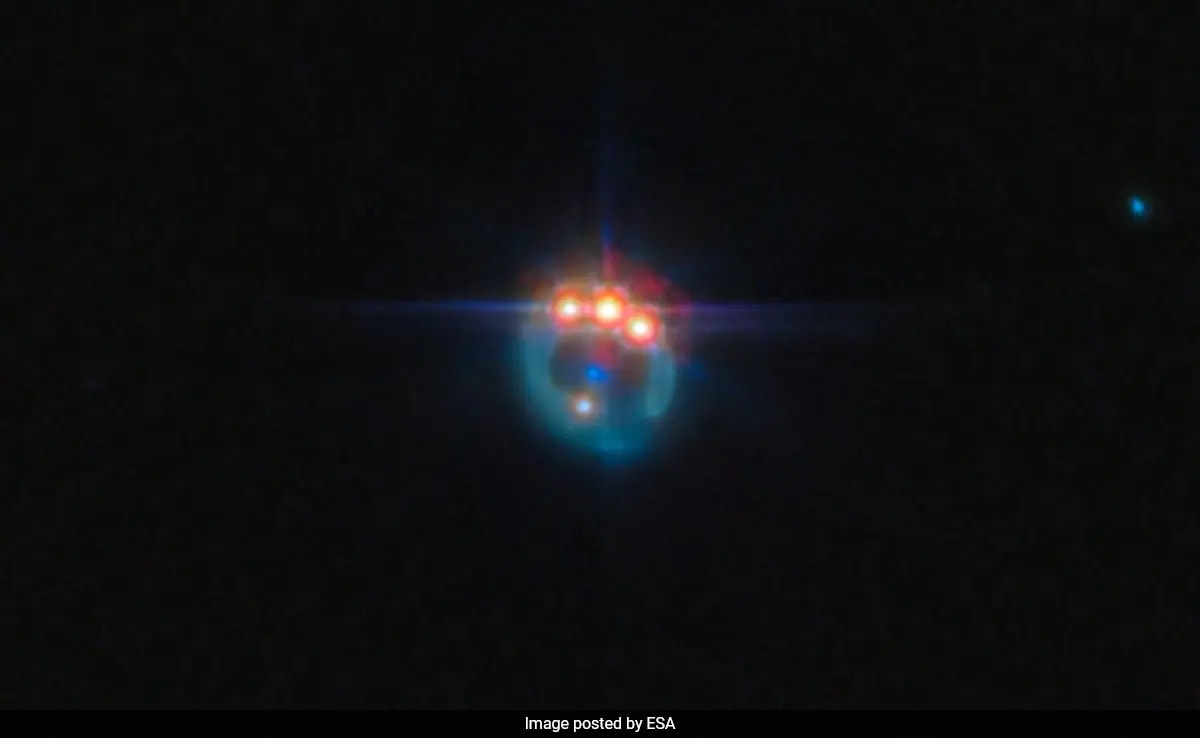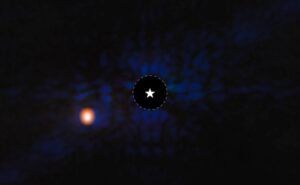These quasars are fueled by immense amounts of gas and dust
The James Webb Space Telescope has captured a breathtaking image of a distant quasar, a super bright object powered by a black hole. This image isn’t your typical space picture though. A cosmic phenomenon called gravitational lensing has transformed the quasar’s light into a stunning “Einstein ring.”
The quasar, known as RX J1131-1231, resides an incredible 6 billion light-years from Earth. In the foreground of the image lies a massive elliptical galaxy. Its powerful gravity bends the light from the distant quasar, creating a bright arc and even duplicate images. This creates a mesmerizing effect resembling a ring adorned with jewels.
These quasars are fueled by immense amounts of gas and dust swirling into a galaxy’s supermassive black hole. This feeding frenzy makes the quasar incredibly luminous. According to the European Space Agency (ESA), the gravitational lensing effect allows astronomers to peer into the region around the black hole in these distant objects, offering valuable insights otherwise impossible to obtain.
“Measurements of the X-ray emission from quasars can provide an indication of how fast the central black hole is spinning and this gives researchers important clues about how black holes grow over time,” ESA officials said in the statement.
In the new JWST image, the elliptical galaxy that serves as a gravitational lens appears as a small blue dot at the centre of the ring. This galaxy acts like a natural telescope, amplifying the light from a distant quasar that would otherwise be too distant to study directly.
“If a black hole grows primarily from collisions and mergers between galaxies, it should accumulate material in a stable disc, and the steady supply of new material from the disc should lead to a rapidly spinning black hole,” ESA officials said in the statement. “On the other hand, if the black hole grew through many small accretion episodes, it would accumulate material from random directions. Observations have indicated that the black hole in this particular quasar is spinning at over half the speed of light, which suggests that this black hole has grown via mergers, rather than pulling material in from different directions.”
The recent image was captured using JWST’s Mid-Infrared Instrument (MIRI) as part of a comprehensive study on dark matter and its distribution across the universe. Combined with previous observations from other telescopes, RX J1131-1231 is now regarded as one of the most exceptional lensed quasars ever discovered.


